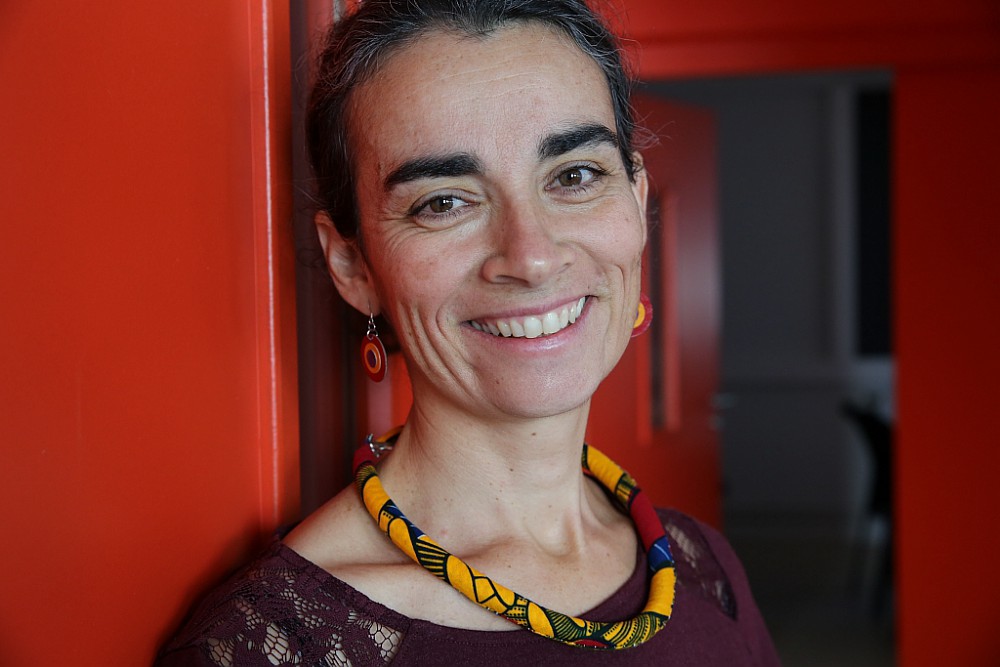Restoring movement through neurostimulation: objective achieved for Agilis project phase two
Date:
Changed on 06/10/2022
The second phase of the Agilis project mobilizes a long-term research team, Christine Azevedo's Camin project-team in Montpellier, in close collaboration with numerous healthcare professionals and with the support EIT Health. This work requiring surgical interventions has been impacted and delayed due to the health situation. The researchers are working with the startup Neurinnov which has developed an implant to restore grip functions in people who, while having complete paralysis of the upper limbs, have retained voluntary control of the shoulder and elbow. The multicontact epineural electrodes are manufactured by CORTEC (Germany).
The objective was to implant two electrodes for one month in the arm of two volunteers with a cervical spinal cord injury and to follow for four weeks the technical and functional performances in order to evaluate the interest of this approach.
The external electrical stimulator (STIMEP) used was developed by the Camin team. Activation patterns of the different electrode contacts were developed to allow the activation of the paralyzed muscles of their arm in a selective way to restore different gesture functions of grasping objects. Patients used movements of their contralateral shoulder or muscle contractions to transmit commands to the stimulator. At the end of the 4 weeks of experimentation, the electrodes were removed.
Step 1: Preparation of the surgery to place the electrodes
Careful preparation of the implants provided by the startup Neurinnov according to the research work of the Camin team.
Hubert Raguet, Inria
Step 2: Two hours of surgery to place the electrodes
Two hours of surgery were necessary for the surgical team of the St Jean clinic in Montpellier, led by Dr Jacques Tessier with Dr Antoine Geffrier from Rennes University Hospital (previously at AP-HP) to implant the electrodes on the radial and median nerves of the two patients.
Hubert Raguet, Inria
Step 3: Functional tests, adjustment and measurement phase with the patients
The moment of truth: the two patients, Jérôme and Vincent, test the object input and the possible interactions while the scientific team refines the adjustments and measurements under the responsibility of Dr Charles Fattal at the Bouffard-Vercelli USSAP rehabilitation center in Perpignan.
Hubert Raguet, Inria
Step 4: For the two implanted patients, the pride of having participated in a very conclusive experiment
A very positive outcome for the two patients of Dr. Charles Fattal, Chief Physician at the Functional Rehabilitation Center of Perpignan: Vincent and Jérôme share their experience of temporarily regained mobility and the pride of having participated in a research project.
Hubert Raguet, Inria
At the end of this experimental phase, Dr. Jacques Tessier of the St Jean Clinic in Montpellier, France, summed up the results of this collaboration: "Restoring a prehension by tendinomuscular transfers in a tetraplegic patient is an extremely gratifying surgery. Restoring this prehension, by hyperselective neural fascicular stimulation, mobilizes the genius of a multidisciplinary team (engineers, surgeons, rehabilitation specialists) for potentially magical results.”
Dr Jacques Tessier, clinic St Jean, Montpellier
"The current research aiming at restoring functional capacities to the upper limb of patients suffering from tetraplegia thanks to neural stimulation opens a new field of therapeutic possibilities which are to be hybridized with those already available, notes Dr. Antoine Geffrier from Rennes University Hospital, member of the Agilis project."But above all, it provides a solution for the most affected patients who were previously ineligible for the classic functional restoration program. It opens a new horizon for them."
Dr Antoine Geffrier, CHU, Rennes
"This project is very interesting, intuitive and very promising for the future, all with a very professional and caring team."
Vincent, one of the participants
A seemingly simple problem, as described by Dr. Charles Fattal, Chief Physician at the Functional Rehabilitation Center of Perpignan: "how to provide the hand of the tetraplegic person with motor functions allowing him to grasp objects of daily life?" This question is at the heart of the challenge raised by the Agilis project. Thanks to electrostimulation of the nerves of the upper limb by implanted circular electrodes, this program aims to produce a synergistic and selective control of the key muscles of the hand and wrist.
Above all, it is an eminently multidisciplinary project that "brings together the skills of surgeons and doctors specializing in the treatment of people with spinal cord injuries, researchers and engineers experienced in muscle electrostimulation, and those of patients who are keen to make progress in this field. “
The objective is "to offer the promise of a reliable and viable technological and functional solution to any tetraplegic person who could not have access to classic functional surgery dominated by musculotendinous transfers.
“Neurinnov is an Inria startup resulting from the Camin research team, whose mission is to commercialize the Agilis solution by developing an implant that will allow us to offer a fully implanted neuroprosthesis solution (electrodes and stimulator) on the market within three years, after the preclinical testing phases carried out over several months on volunteers, in accordance with the regulations in force. This is a high-tech industrial project that is very complex from a regulatory standpoint, “ explains Christine Azevedo.
The project partners
